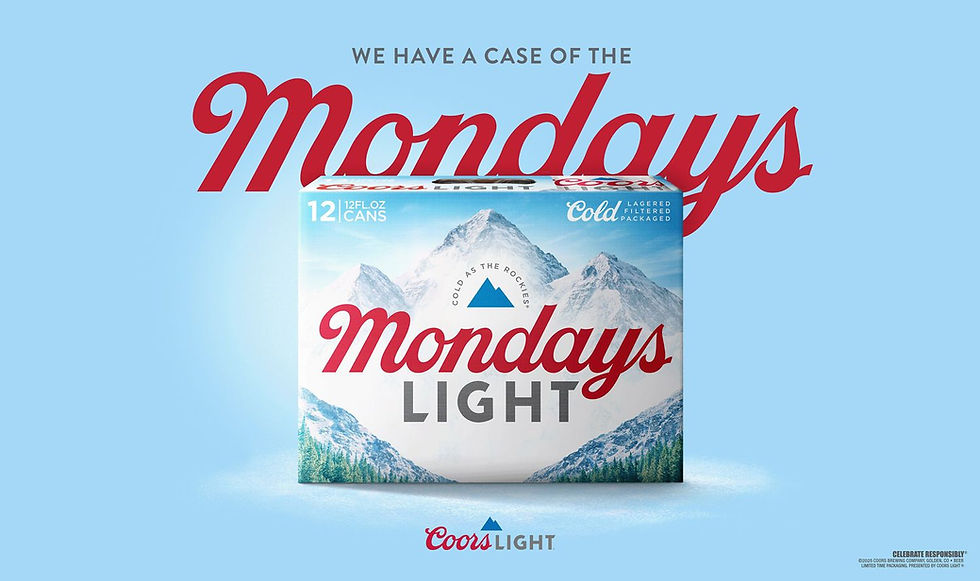The Skills Coach
- Brooke Lighton

- Oct 19, 2022
- 4 min read
“I had a very famous trainer tell me once, ‘You can usually train a wild animal, but never tame a wild animal, ever.’ They are always going to be wild, no matter what anybody says.” – Jack Hanna
Before starting my own agency, I was a group creative director at Foote Cone & Belding. Skills training was a hot trend, and our group participated in a number of sessions—things like conflict management and team building were big at the time. You know the scene: the 350-pound CMO falls back into the outstretched arms of her teammates who break her fall, thus proving they can be trusted. Yes, I saw this.

One session on presentation skills was a standout. You could say the coach “took us to school.”
Because creative people have to sell their work to clients, it makes sense to know the nuances of persuasion. Our guy was a pro, a former CD with a track record of major wins on global CPG accounts. “Your first assignment,” he said, “is to stand up and give us 3 minutes on you. Don’t talk about advertising; convince me that you’re worth my time.”
One after another, people stood up with the same result…
“I grew up in the Midwest. I love to draw and that’s what got me into design school…”
“Sit down,” the trainer bellowed. “Next!”
“I am an avid basketball player. I think that’s what drives my work ethic…the thrill of competition…”
“Next,” yelled the guy.
“Let’s see; I guess I just get off on creating characters…”
“Next!”
Point taken.
Then a young woman on our team stood up. She held out her arm, which was shaking. “You may not know this,” she said, “but diabetes can cause a comatose state if people like me forget to take their insulin.” She then placed a black leather box on the table and pulled out a needle. “I forgot to take mine this morning, so I’ll have to give myself the shot now.” And she did! She actually injected herself as everyone in the room looked on, transfixed. Her arm quickly stopped shaking. “As you can see,” she continued, “my body is now functioning normally. Essentially, the insulin has put it back into remission.”
“Yes!” the trainer shouted. “That was outstanding!”
He turned his attention to us. “Why was that so compelling?” he asked. Without waiting for an answer he said, “She didn’t tell me…she showed me. She scared the shit out of me, and I loved it. That’s why we’re here,” he continued, “to learn how to tell a story. And to do it without putting your audience to sleep.”
Over the next two days, some of us formed teams and some opted to present solo. My partner and I pitched the idea of a women’s football league. The assembled group was our “client,” and we presented data that showed a potential “whitespace” in the marketplace for tougher women’s sports. We came up with a value proposition, a name and tagline, and we pitched our strategy and campaign ideas. Suffice it to say, he didn’t flunk us.
The fake
One person was a standout. Craig was the new account guy; a recent hire who looked great on paper and in person. Only problem was, Craig was faking it. Back then, you could get a job at an ad agency without a lot of big brand experience. Craig had worked at an agency, he could talk marketing-speak, and somehow it got him a job at FCB. I worked with him on The Aspen Skiing Company and on Gatorade. He held a junior role on both, so his flaws had not yet surfaced.
The training session was the start of his eventual downfall. When it was his turn to present, Craig was sitting at the conference table with the rest of us. He stood up and carried a chair across the room, placing it against the wall. “Today,” he said, “I’m going to teach you how to do the backflip.”
He left himself a slim corridor between the wall and the conference table. We were all looking at that space. How, I thought, is he going to run down the alley, jump up on the chair, do a backward somersault, land on his feet and not hit the ceiling? He’ll kill himself.

We were mesmerized. Craig moved his chair back and stood up, as if to start his run at the target. And then he just started talking. Instead of demonstrating the backflip, he described in unemotional detail how one could do the backflip. But he didn’t actually do it. You could feel all the anticipation in the room flatten out and die, like air hissing out of an inner tube until there’s nothing left.
“Fail,” shouted the trainer and slammed his hand down on the table. “You fail. You should have broken your silly ass. Never,” he yelled “promise the moon and not deliver.”
To this day, I remember the sense of shame we all felt for Craig. A feeling I don’t think he shared. The guy was a fake, even to himself. About a month later, he was asked to present research and a strategy to a client, and he clearly hadn’t prepared. I was embarrassed for him. Needless to say, that was Craig’s last day at the agency.
Who threw this guy under the bus? He did.
When you look good in person and on paper, people expect you to deliver. Don’t disappoint.



Comments